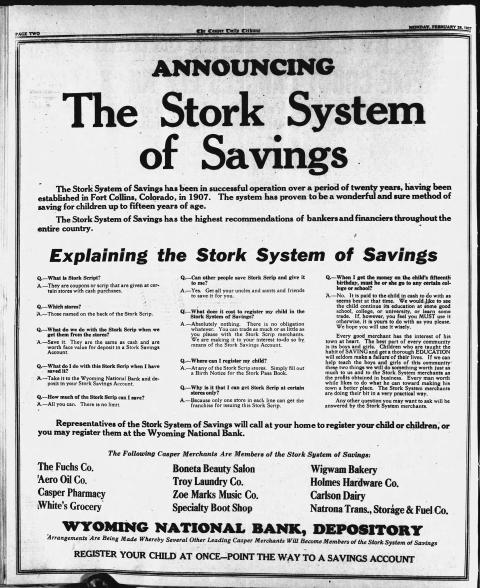From Fresh Oysters to Self-Checkout: 150 Years of Grocery Shopping in Laramie
By Judy Knight
This Thanksgiving, as you navigate crowded aisles and tap through self-checkout screens, take a moment to consider how far we’ve come.
When the Union Pacific Railroad reached Laramie in May 1868, it brought more than just settlers—it transformed how a frontier community fed itself. What followed was a remarkable 150-year evolution from hunting your own protein to scanning barcodes, a transformation that mirrors the broader American experience.
The Frontier Beginnings
Before the railroad arrived, survival was simple if harsh: You lived off the land. But the railroad changed everything. Unlike wagon train pioneers who arrived with sacks of flour and sugar, train passengers stepped off in Laramie with little more than their belongings, creating an immediate market for groceries.
Fred Prahl established what would become Laramie’s longest-running grocery tradition when he opened his store around 1870 on the 500 block of Second Street (where McClure’s Home Furnishings stands today). That location would house grocery stores until 1977—an astonishing 107-year run.

A Social Institution
Early grocery shopping was a far cry from today’s self-service aisles. Customers sat on benches inside stores, placed their orders with clerks, and rarely carried anything home themselves. Instead, horse-drawn wagons delivered groceries directly to homes, with drivers authorized to stock ice boxes and pantries. The shopping was typically done by maids rather than housewives, creating a daily social gathering place where domestic workers could exchange news and gossip.
The credit system dominated these early transactions. Cash was scarce since most people lived paycheck to paycheck, receiving wages monthly. When grocery proprietor Channing S. Dunbar tried to switch to cash-only in 1876, citing $30,000 in unpaid bills, he was fighting against the economic reality of frontier life.
Surprising Luxuries
Despite the frontier setting, Laramie’s early grocers offered remarkable variety. By 1876, stores were advertising fresh California figs and—most surprisingly—fresh oysters. This wasn’t mere frontier bravado; oysters packed in saltwater barrels could survive railroad transport for up to two months. Having oyster plates became a mark of luxury, with the wealthy Ivinson family’s collection still displayed today at the Laramie Plains Museum.

Local production supplemented imported goods. “Milk Mary” Erhardt arrived by train in 1868 with six cows, establishing Laramie’s first dairy. John Huempner made bottled horseradish in 1892 from his factory on South Second Street, while in 1897, N.C. Peterson’s Laramie Bottling Works advertised “temperance drinks” including birch beer, ginger ale, and mineral waters.
The Age of Innovation
The early 1900s brought significant changes. Insulated railway boxcars meant better preservation of perishables, while the rise of neighborhood groceries transformed shopping from a downtown excursion to a local convenience. By 1928, Laramie had 23 grocery operations—15 small neighborhood stores plus 8 larger downtown establishments.
One fascinating detail from this era involves “Stork Script,” a customer loyalty program that appeared in Wyoming around 1911. Customers received coupons worth two to five percent of their cash purchases, which could be deposited at banks into special “Stork Savings Accounts” for children’s future education or other needs. The system experienced a resurgence around 1927 when Casper had eighteen participating merchants, with the Wyoming National Bank serving as the local depository. Evidence shows the program continued operating in Laramie at least through 1930—a clever blend of retail promotion and children’s savings.
Chains and Modernization
Piggly Wiggly opened Laramie’s first chain store in 1922, bringing revolutionary self-service shopping to a town accustomed to clerk-assisted purchases. The store’s unusual name remains a mystery—founder Clarence Saunders was curiously reluctant to explain its origin, though he once said he chose it “so people will ask that very question.” Located in the old Odd Fellows building on Third Street, it pioneered the concept of customers selecting their own goods from open shelves. The chain’s franchise concept spread rapidly across Wyoming, with Cheyenne opening its Piggly Wiggly in November 1924 and Lander following in January 1926.
Safeway followed in 1928 as “Skaggs Safeway Store,” beginning a grocery dynasty that continues today. The post-World War II era brought suburbanization and automobile culture, fundamentally changing grocery shopping. Stores moved from downtown to provide parking, beginning with Safeway’s 1961 relocation to Grand Avenue.


The Shusters consolidated multiple local groceries into Ideal Super Foods in 1977, creating Laramie’s largest store at that time. Technology continued reshaping the experience when the Ideal store pioneered barcode scanning in Laramie around 1990, though customers were initially so skeptical that staff continued putting price stickers on every item until shoppers gained confidence in the new system.
Full Circle
Today’s grocery landscape would astonish those early Laramie settlers. Self-checkout stations eliminate human interaction entirely and online ordering brings delivery back full circle to the 1870s model. Yet fundamental challenges remain unchanged: The grocery business still operates on razor-thin profit margins, success depends on volume and customer loyalty, and feeding a community remains both an economic necessity and a social institution.
From Clark Pelton, a reformed horse thief who operated South Side Grocery, to modern chain stores with thousands of products, Laramie’s grocery evolution reflects broader American themes of technological progress, changing social roles, and the eternal challenge of building sustainable communities.
This post draws primarily from Judy Knight’s research published in “Grocers aim to please– Laramie had fresh oysters in 1876” and “Part 2: Laramie grocery stores after 1900” on the Albany County Historical Society website.

